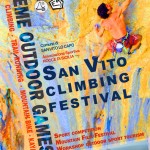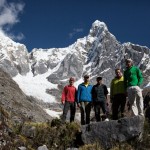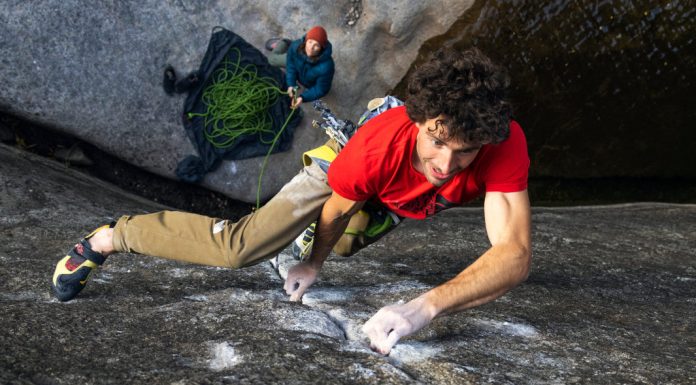A number of new regulations are to come into effect regarding climbing in Patagonia. With the huge boom in not only climbers, but trekkers and tourists, the park and surrounding region have been transformed – both economically and environmentally – in the last 25 years. Read below for the full details: “The following is to inform you and your readers of several changes that have taken effect and will take effect in the Fitz Roy and Cerro Torre massif, in the northern part of Los Glaciares National Park. This area has seen a severe increase in the number of visitors, from a few hundred in the early 1980s, to 20,000 in 1998 and finally 45,000 in 2005. Although most of the visitors come solely to trek, climbers who usually spend extended periods of time in the area waiting for good weather will be affected by the changes as well.In an attempt to counter some of the environmental degradation that is taking place starting in September of next year, 2007, the use of horses to transport equipment and food in the trails surrounding the Fitz Roy and Cerro Torre massif will not be allowed any more. Horses have a severe impact in the trails that surround the town of El Chalten. This new regulation will have a direct impact in climbers who for the last couple of decades have relied on horses to carry their gear to their respective base-camps. Climbers planning to visit the area in the 2007-2008 season should come prepared to carry their gear and food.Climbers should also note that the “climber´s hut” at Campo De Agostini, a rustic structure made of logs and nylon that was built in 1987, then quadrupled in size in 1994, has been permanently taken down, and that the huts in the Rio Blanco base-camp will be taken down in the very near future. The Park intends to enforce a policy that allows no structures of any kind to be built. This includes any kind of shelter other than a tent.The profile of today´s visitors has significantly changed and unfortunately climbers cannot continue to enjoy the privileged life they experienced in the 1980s and early 1990s, a time when they composed the majority of the visitors in the area. These “climbers huts” have been a source of friction between different user groups, becoming a less than welcoming space in what is otherwise a public space. They also collect much garbage, are extremely unsightly, and go against National Park Administration´s main objective which is the preservation of the natural environment in it´s original, pristine form.In the mid 1980s, when these huts were built, the town of El Chalten did not exist. Today Rio Blanco and De Agostini, which are located only a short distance from this town, can hardly be called base-camps anymore. In the last few years a large percentage of climbers have started basing themselves in El Chalten and hiking directly into the mountains when the weather improves. This approach lengthens their journey by a mere 2 hours, a fairly insignificant amount. We would like to encourage this as a way of focusing the environmental impact in the town itself. Living inside a National Park for very extended periods of time is a sensitive issue, one that is seldom permitted in other Parks around the world. While we do not intend to ban camping within the Park boundaries, we do hope climbers will cooperate by trying to reduce as much as possible their impact within the Park.Other than these few changes all other regulations will remain unchanged. Climbers visiting the area have to register in the Park´s office upon arriving to Chalten. Climber registration is completely free but it is mandatory.We would very much appreciate if you can inform your readers of this new policy so next season climber will come prepared to porter their gear on their own.Please let us know if you have any questions.Many thanks,Carlos Duprez Encargado Zona Norte Parque Nacional Los Glaciares Seccional Lago Viedma Santa Cruz Argentina”
- Home
- News
- Videos
- Fotos
- Klettergebiete
- Unternehmen & Produkte
- Themen
- Themen beginnend mit 0-9
- Themen beginnend mit A
- Themen beginnend mit B
- Themen beginnend mit C
- Themen beginnend mit D
- Themen beginnend mit E
- Themen beginnend mit F
- Themen beginnend mit G
- Themen beginnend mit H
- Themen beginnend mit I
- Themen beginnend mit J
- Themen beginnend mit K
- Themen beginnend mit L
- Themen beginnend mit M
- Themen beginnend mit N
- Themen beginnend mit O
- Themen beginnend mit P
- Themen beginnend mit Q
- Themen beginnend mit R
- Themen beginnend mit S
- Themen beginnend mit T
- Themen beginnend mit U
- Themen beginnend mit V
- Themen beginnend mit W
- Themen beginnend mit X
- Themen beginnend mit Y
- Themen beginnend mit Z
- Routendatenbank
Climbing.de ist eine der ältesten deutschsprachigen Bergsportseiten im Internet.
Seit 1998 präsentiert Inhaber Martin Joisten, dessen Texte und Bilder in zahlreichen nationalen und internationalen Publikationen zu finden sind, aktuelle Informationen aus der Welt des Bergsports.
Seit 1998 präsentiert Inhaber Martin Joisten, dessen Texte und Bilder in zahlreichen nationalen und internationalen Publikationen zu finden sind, aktuelle Informationen aus der Welt des Bergsports.
Kontaktieren Sie uns: info@climbing.de
© Copyright 1998 - 2022 Climbing.de by Martin Joisten


![[VIDEO] Alexander Megos: URSUS | The days after the send URSUS | The days after the send (c) Alexander Megos](https://www.climbing.de/wp-content/uploads/2024/03/youtube_WCZVR9-tZTc-218x150.jpg)

![[VIDEO] Stefano Ghisolfi: ALL my secrets about ENDURANCE Stefano Ghisolfi: ALL my secrets about ENDURANCE (c) Stefano Ghisolfi](https://www.climbing.de/wp-content/uploads/2024/03/youtube_xlQ2OreHL60-218x150.jpg)
![[VIDEO] THE FULL JOURNEY 9B FA by Alexander Megos THE FULL JOURNEY 9B FA by Alexander Megos (c) Alexander Megos](https://www.climbing.de/wp-content/uploads/2022/12/youtube_QwjykRehg7M-218x150.jpg)
![[VIDEO] MEGATRON V17 MEGATRON V17 (c) mellow](https://www.climbing.de/wp-content/uploads/2022/12/youtube_f_MniTA8MYU-218x150.jpg)
![[VIDEO] Moulin Rouge (7b) Free Solo | Jonas Hainz Moulin Rouge - Free Solo (c) Jonas Hainz](https://www.climbing.de/wp-content/uploads/2022/10/youtube_UQs4KNRBHss-218x150.jpg)

![[VIDEO] Jan Hojer bouldert in Südafrika](https://www.climbing.de/wp-content/uploads/2014/12/vimeo_47555959-150x150.jpg)










